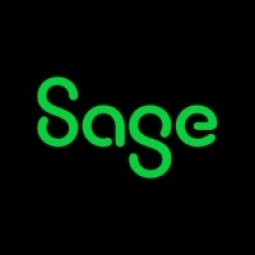Customer Company Size
SME
Region
- America
Country
- United States
Product
- Sage Inventory Advisor
- Sage 100 ERP
Tech Stack
- Cloud-based solution
Implementation Scale
- Enterprise-wide Deployment
Impact Metrics
- Cost Savings
- Productivity Improvements
Technology Category
- Platform as a Service (PaaS) - Data Management Platforms
Applicable Industries
- Oil & Gas
Applicable Functions
- Procurement
Use Cases
- Inventory Management
- Supply Chain Visibility
Services
- Cloud Planning, Design & Implementation Services
About The Customer
Hubert Glass Oil Company is a fuel and oil distributor based in Jacksonville, Texas. The company serves dealerships, retail stores, and repair facilities throughout eastern Texas. The company operates from three locations and is constantly striving to ensure it carries the right mix of products in the right quantities to satisfy customers’ demands without overstocking. The company was using various tools and reports for making purchasing decisions, which was not efficient and did not provide accurate usage figures and forecasting ability.
The Challenge
Hubert Glass Oil Company, a fuel and oil distributor in eastern Texas, was facing challenges in managing its inventory. The company needed to ensure it carried the right mix of products in the right quantities to satisfy customers’ demands without overstocking. The company was using various tools and reports for making purchasing decisions, which was not efficient and did not provide accurate usage figures and forecasting ability.
The Solution
The company implemented Sage Inventory Advisor, a cloud-based solution, in conjunction with Sage 100 ERP. Sage Inventory Advisor allowed the company to analyze usage at a raw component level as well as a finished product level, providing more accurate usage figures and better forecasting ability. The solution also calculates the expected revenue associated with top-selling items and the revenue losses associated with stock outages of those items. The dashboard provided by the solution gives a quick, concise look at the inventory status, showing what products the company is running low on, and the suggested timing and quantity of the next order. The solution also has the option to export the recommended order quantities to Sage 100 ERP and automatically create the purchase orders.
Operational Impact
Quantitative Benefit

Case Study missing?
Start adding your own!
Register with your work email and create a new case study profile for your business.
Related Case Studies.

Case Study
Taking Oil and Gas Exploration to the Next Level
DownUnder GeoSolutions (DUG) wanted to increase computing performance by 5 to 10 times to improve seismic processing. The solution must build on current architecture software investments without sacrificing existing software and scale computing without scaling IT infrastructure costs.

Case Study
Remote Wellhead Monitoring
Each wellhead was equipped with various sensors and meters that needed to be monitored and controlled from a central HMI, often miles away from the assets in the field. Redundant solar and wind generators were installed at each wellhead to support the electrical needs of the pumpstations, temperature meters, cameras, and cellular modules. In addition to asset management and remote control capabilities, data logging for remote surveillance and alarm notifications was a key demand from the customer. Terra Ferma’s solution needed to be power efficient, reliable, and capable of supporting high-bandwidth data-feeds. They needed a multi-link cellular connection to a central server that sustained reliable and redundant monitoring and control of flow meters, temperature sensors, power supply, and event-logging; including video and image files. This open-standard network needed to interface with the existing SCADA and proprietary network management software.

Case Study
Refinery Saves Over $700,000 with Smart Wireless
One of the largest petroleum refineries in the world is equipped to refine various types of crude oil and manufacture various grades of fuel from motor gasoline to Aviation Turbine Fuel. Due to wear and tear, eight hydrogen valves in each refinery were leaking, and each cost $1800 per ton of hydrogen vented. The plant also had leakage on nearly 30 flare control hydrocarbon valves. The refinery wanted a continuous, online monitoring system that could catch leaks early, minimize hydrogen and hydrocarbon production losses, and improve safety for maintenance.






